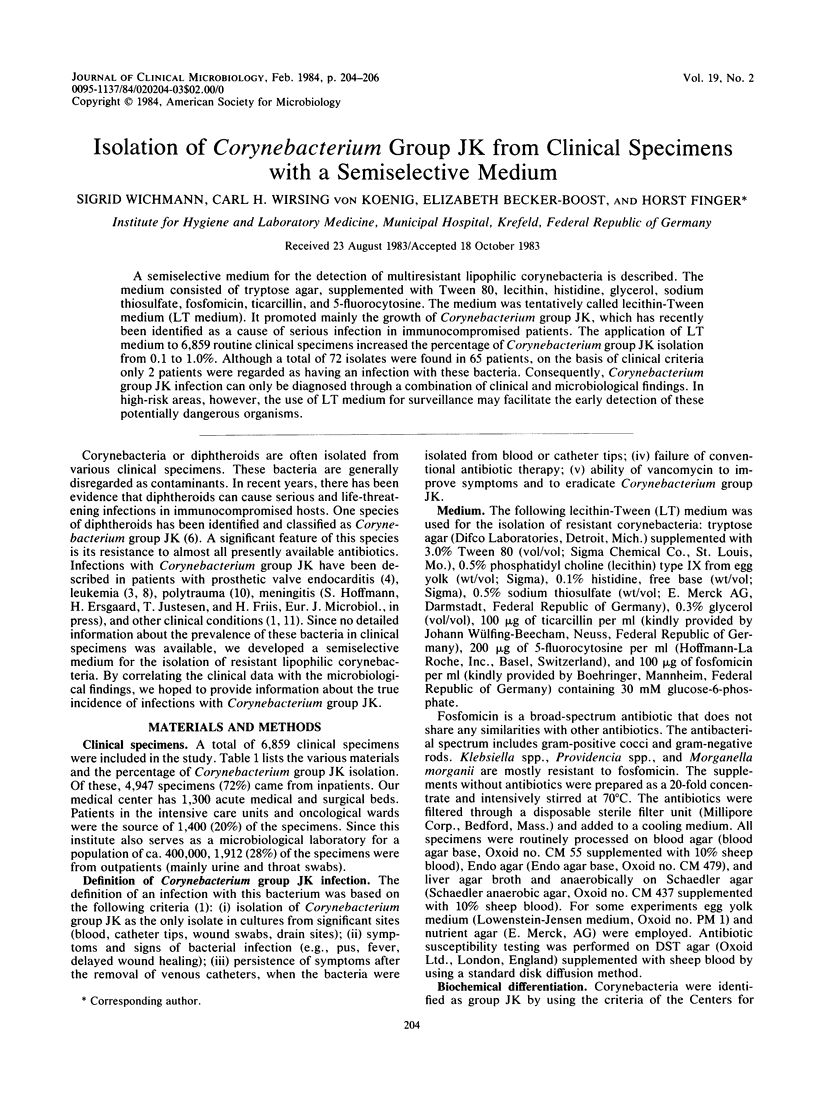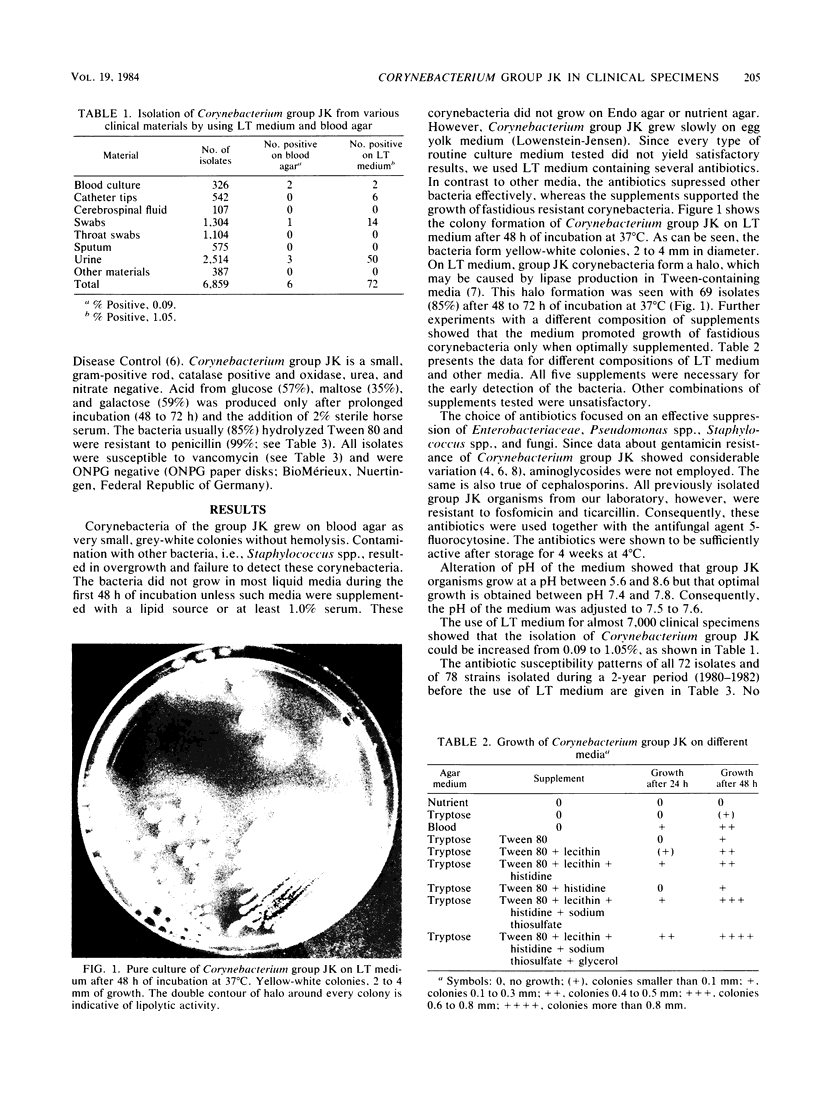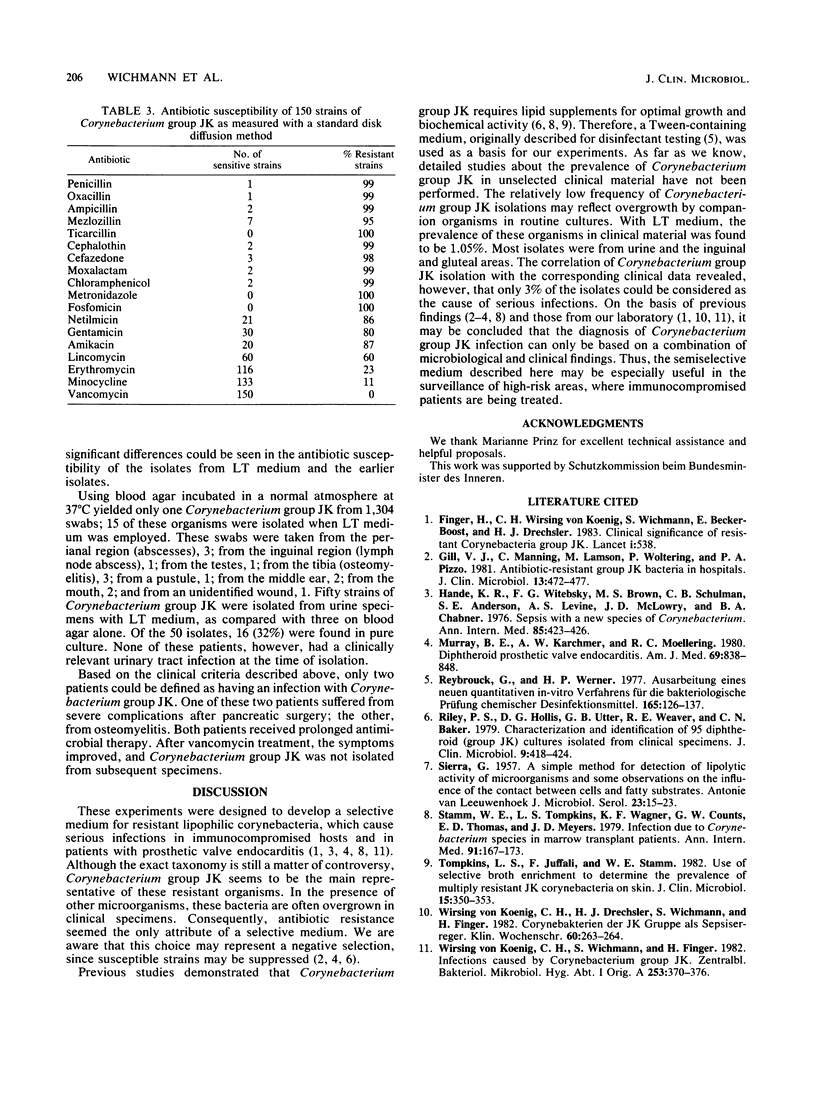Abstract
A semiselective medium for the detection of multiresistant lipophilic corynebacteria is described. The medium consisted of tryptose agar, supplemented with Tween 80, lecithin, histidine, glycerol, sodium thiosulfate, fosfomycin, ticarcillin, and 5-fluorocytosine. The medium was tentatively called lecithin-Tween medium (LT medium). It promoted mainly the growth of Corynebacterium group JK, which has recently been identified as a cause of serious infection in immunocompromised patients. The application of LT medium to 6,859 routine clinical specimens increased the percentage of Corynebacterium group JK isolation from 0.1 to 1.0%. Although a total of 72 isolates were found in 65 patients, on the basis of clinical criteria only 2 patients were regarded as having an infection with these bacteria. Consequently, Corynebacterium group JK infection can only be diagnosed through a combination of clinical and microbiological findings. In high-risk areas, however, the use of LT medium for surveillance may facilitate the early detection of these potentially dangerous organisms.
Full text
PDF


Images in this article
Selected References
These references are in PubMed. This may not be the complete list of references from this article.
- Finger H., Wirsing von Koenig C. H., Wichmann S., Becker-Boost E., Drechsler H. J. Clinical significance of resistant corynebacteria group JK. Lancet. 1983 Mar 5;1(8323):538–538. doi: 10.1016/s0140-6736(83)92230-4. [DOI] [PubMed] [Google Scholar]
- Gill V. J., Manning C., Lamson M., Woltering P., Pizzo P. A. Antibiotic-resistant group JK bacteria in hospitals. J Clin Microbiol. 1981 Mar;13(3):472–477. doi: 10.1128/jcm.13.3.472-477.1981. [DOI] [PMC free article] [PubMed] [Google Scholar]
- Hande K. R., Witebsky F. G., Brown M. S., Schulman C. B., Anderson S. E., Jr, Levine A. S., MacLowery J. D., Chabner B. A. Sepsis with a new species of Corynebacterium. Ann Intern Med. 1976 Oct;85(4):423–426. doi: 10.7326/0003-4819-85-4-423. [DOI] [PubMed] [Google Scholar]
- Murray B. E., Karchmer A. W., Moellering R. C., Jr Diphtheroid prosthetic valve endocarditis. A study of clinical features and infecting organisms. Am J Med. 1980 Dec;69(6):838–848. doi: 10.1016/s0002-9343(80)80009-x. [DOI] [PubMed] [Google Scholar]
- Reybrouck G., Werner H-P Ausarbeitung eines neuen quantitativen in-vitro-Tests für die bakteriologische Prüfung chemischer Desinfektionsmittel. Zentralbl Bakteriol Orig B. 1977 Sep;165(1):126–137. [PubMed] [Google Scholar]
- Riley P. S., Hollis D. G., Utter G. B., Weaver R. E., Baker C. N. Characterization and identification of 95 diphtheroid (group JK) cultures isolated from clinical specimens. J Clin Microbiol. 1979 Mar;9(3):418–424. doi: 10.1128/jcm.9.3.418-424.1979. [DOI] [PMC free article] [PubMed] [Google Scholar]
- SIERRA G. A simple method for the detection of lipolytic activity of micro-organisms and some observations on the influence of the contact between cells and fatty substrates. Antonie Van Leeuwenhoek. 1957;23(1):15–22. doi: 10.1007/BF02545855. [DOI] [PubMed] [Google Scholar]
- Stamm W. E., Tompkins L. S., Wagner K. F., Counts G. W., Thomas E. D., Meyers J. D. Infection due to Corynebacterium species in marrow transplant patients. Ann Intern Med. 1979 Aug;91(2):167–173. doi: 10.7326/0003-4819-91-2-167. [DOI] [PubMed] [Google Scholar]
- Tompkins L. S., Juffali F., Stamm W. E. Use of selective broth enrichment to determine the prevalence of multiply resistant JK corynebacteria on skin. J Clin Microbiol. 1982 Feb;15(2):350–351. doi: 10.1128/jcm.15.2.350-351.1982. [DOI] [PMC free article] [PubMed] [Google Scholar]
- Wirsing von König C. H., Drechsler H. J., Wichmann S., Finger H. Corynebakterien der JK-Gruppe als Sepsiserreger. Klin Wochenschr. 1982 Mar 1;60(5):263–264. doi: 10.1007/BF01728346. [DOI] [PubMed] [Google Scholar]
- Wirsing von König C. H., Wichmann S., Finger H. Corynebakterien der JK-Gruppe als Krankheitserreger. Zentralbl Bakteriol Mikrobiol Hyg A. 1982 Dec;253(3):370–376. [PubMed] [Google Scholar]



